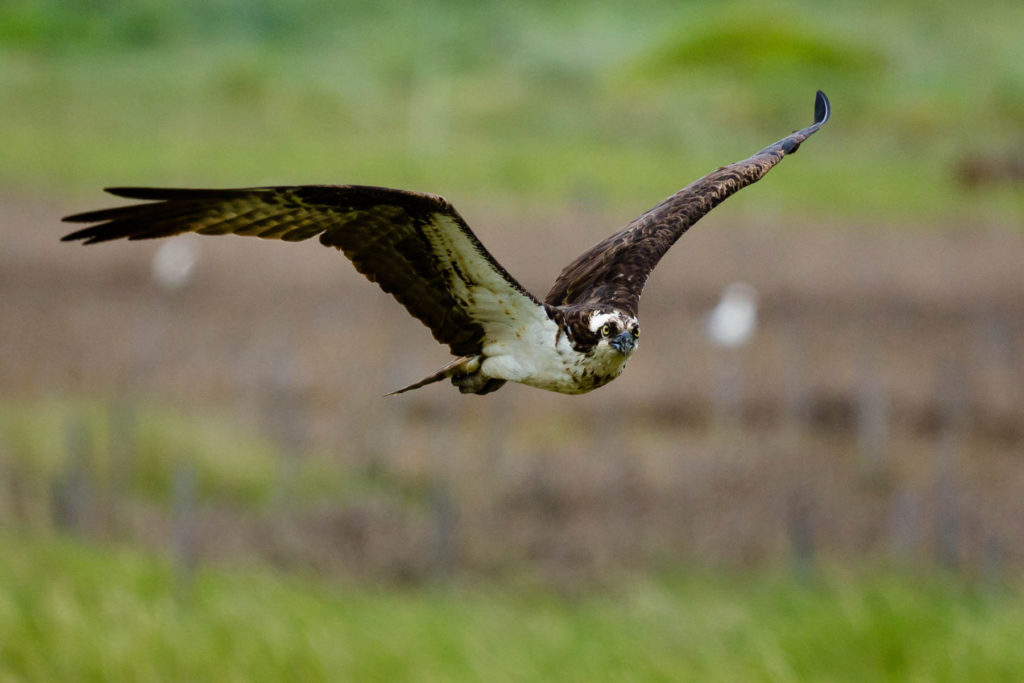
By Susan Buckingham
If you haven’t seen an osprey in Queen’s Landing yet, you will very soon. My first sighting last year was March 23. In the early spring, males arrive to check out their nests and gather supplies that the females will use to prepare the nest for this year’s babies. The monogamous pairs arrive separately and reunite to work together to repair the nest, often making it bigger each year. The male gathers sticks and debris while the female works on the nest using the sticks for the outer walls and using moss, sod, vegetation, and other softer materials for the interior.
Watch the platform near the dock at Gibson’s Grant or along the far side of Macum Creek to see the 2019 arrivals. There are many nests in the area — mostly on posts and trees in or near the water, but with a pair of binoculars, the ones by Gibson’s Grant are easy to watch. Females lay one to three eggs between April and May which hatch in June or July. The babies stay in the nest being fed fish by both parents until August when they are ready to start fishing on their own. In late August and September, they head back south for the winter.
Osprey, also called Fish or Sea Hawks, were once in serious decline — decimated by 90% due to pesticide use. Thankfully, they have repopulated the edges of the bay in large numbers since DDT was banned in the 1970s. They are among the first to
arrive for the warmer months and you can see and hear them fishing on the Chester River and Macum Creek from the Queen’s Landing walking path every day. Look for the large, brown raptors flapping high above the shallow water looking for medium sized fish which they catch in their claws. Here on the Chester River, they are likely eating menhaden, perch, or shad which they hold horizontally while flying back to the nest. Now that spring is here, watch and wonder at the new life these magnificent raptors bring to Queen’s Landing.
Sources: